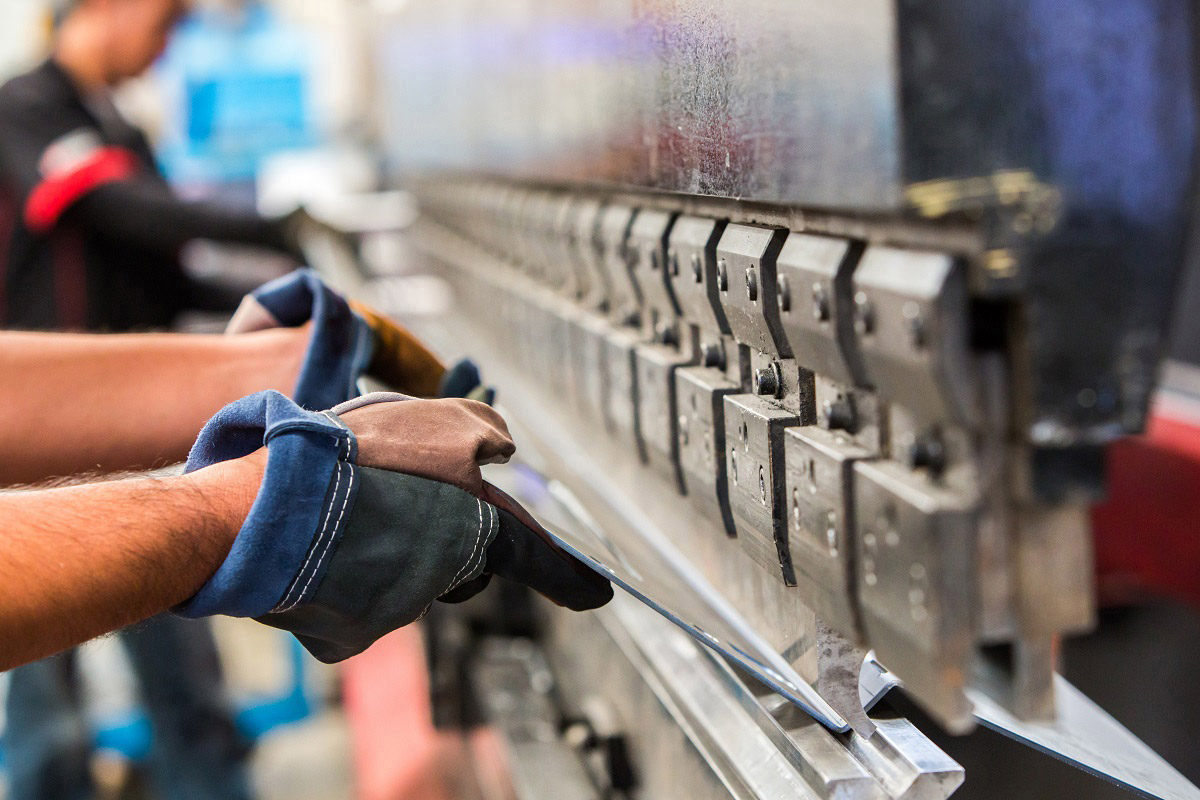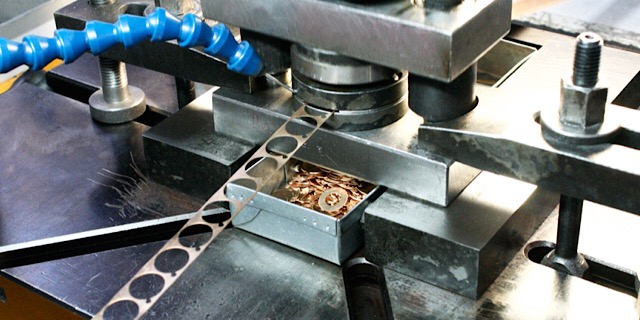Ultimate Guide to Metal Stamping Techniques and Applications
Ultimate Guide to Metal Stamping Techniques and Applications
Blog Article
Metal Marking Developments: Elevating Production Processes for Superior Outcomes
In the realm of making processes, steel stamping has long been a foundation strategy for creating an array of accuracy parts. With the ruthless march of technological development, the landscape of metal marking is undertaking a significant transformation.
Advancement of Steel Marking Strategies

In addition, advancements in material science have actually led to the advancement of high-strength alloys that can currently be seamlessly stamped right into intricate forms, accommodating a wider variety of industrial applications. The assimilation of robotics and artificial intelligence has actually additionally optimized the marking process by boosting rate and accuracy while minimizing the risk of human error.

Influence of Advanced Products
Have innovative products changed steel marking procedures significantly in the manufacturing sector? The response is a definite yes (Metal Stamping). The combination of sophisticated materials has transformed steel marking, making it possible for manufacturers to achieve higher precision, enhanced efficiency, and improved product top quality. By utilizing products such as high-strength alloys, advanced composites, and cutting-edge coverings, steel stamping procedures can now generate components that are lighter, stronger, and a lot more resilient than ever in the past.
These advanced products provide exceptional mechanical residential or commercial properties, rust resistance, and thermal stability, allowing makers to fulfill the demands of contemporary markets such as aerospace, automotive, and electronic devices. Additionally, the use of sophisticated materials in steel marking has actually promoted the production of complex geometries and detailed designs that were previously unattainable via typical techniques.
Furthermore, the application of advanced materials has actually led to lowered material waste, reduced production expenses, and shorter lead times, making metal stamping procedures extra lasting and affordable. As modern technology remains to breakthrough, the influence of sophisticated materials on metal marking processes is anticipated to drive further advancement and improve the competitiveness of manufacturers in the international market.
Automation in Steel Stamping
The development of metal stamping procedures driven by the integration of advanced products has actually set the stage for considerable developments in automation within the production sector. Automation in metal stamping has actually reinvented production processes, enhancing efficiency, precision, and general output top quality. Through the utilization of robotics, sensors, and computer-controlled systems, tasks that were time-consuming and as soon as hand-operated can now be executed with unrivaled rate and accuracy.
Automation in steel marking not only increases manufacturing prices yet also makes dig this certain consistency in the manufacturing process. By reducing human treatment, the threat of errors is dramatically reduced, resulting in greater degrees of item harmony and integrity. Additionally, automation allows suppliers to undertake intricate stamping jobs that would be challenging or impractical to attain manually.
Additionally, automation in steel stamping adds to a more secure working atmosphere by minimizing the need for staff members to participate in recurring or unsafe jobs - Metal Stamping. This shift in the direction of automation not just enhances efficiency but also leads the method for the future of manufacturing, where modern technology plays a main function in driving functional excellence
Quality Assurance and Evaluation Solutions
With an emphasis on accuracy and dependability, top quality control and examination systems play a vital function in guaranteeing item quality in metal stamping procedures. These systems are designed to keep track of every stage of manufacturing, from product evaluation to the end product, to ensure that all parts fulfill the needed requirements. By carrying out sophisticated technologies such as find here optical assessment systems, coordinate measuring makers (CMM), and automated assessing devices, producers can identify also the smallest inconsistencies in measurements, surface area top quality, and overall integrity of stamped parts.

Sustainability Practices in Steel Stamping
Structure upon the structure of accuracy and dependability developed through quality assurance and evaluation systems, the combination of sustainable practices in metal stamping procedures is significantly coming to be a focal factor for suppliers looking for to lessen ecological effect and enhance resource usage. Sustainability methods in metal stamping encompass a series of initiatives targeted at decreasing waste generation, energy consumption, and greenhouse gas emissions throughout the production procedure.
One trick element of sustainability in metal stamping is the fostering of eco-friendly products and modern technologies that advertise recyclability and waste reduction. By utilizing recycled products and applying energy-efficient machinery, makers can lower their carbon impact and add to a much more sustainable manufacturing cycle. Additionally, optimizing manufacturing processes to minimize product waste and energy use not only profits the atmosphere but additionally causes cost financial savings for businesses in the lengthy run.
Moreover, the implementation of lasting practices in steel stamping can enhance brand credibility and interest eco aware customers. As sustainability proceeds to acquire relevance in the manufacturing sector, integrating eco-friendly efforts right into metal marking processes is crucial for long-lasting success and competitiveness in the marketplace.
Conclusion
Finally, steel stamping techniques have actually dramatically progressed click to read more over time, incorporating sophisticated materials and automation to boost producing procedures. Quality assurance and assessment systems play a critical duty in guaranteeing premium results, while sustainability techniques are increasingly being carried out to reduce ecological effect. These innovations in steel stamping have transformed the market, causing extra efficient and sustainable production techniques for different sectors.
Steel marking, when a guidebook and labor-intensive process, has changed right into a highly automated and advanced technique of forming metal sheets right into various kinds and styles.Have innovative materials changed steel stamping procedures substantially in the production sector? By using products such as high-strength alloys, advanced compounds, and ingenious coverings, steel stamping procedures can now create parts that are lighter, more powerful, and much more durable than ever in the past.
The development of metal marking processes driven by the combination of sophisticated products has actually established the phase for considerable developments in automation within the production market.In verdict, metal stamping strategies have substantially advanced over time, incorporating innovative materials and automation to improve manufacturing procedures.
Report this page